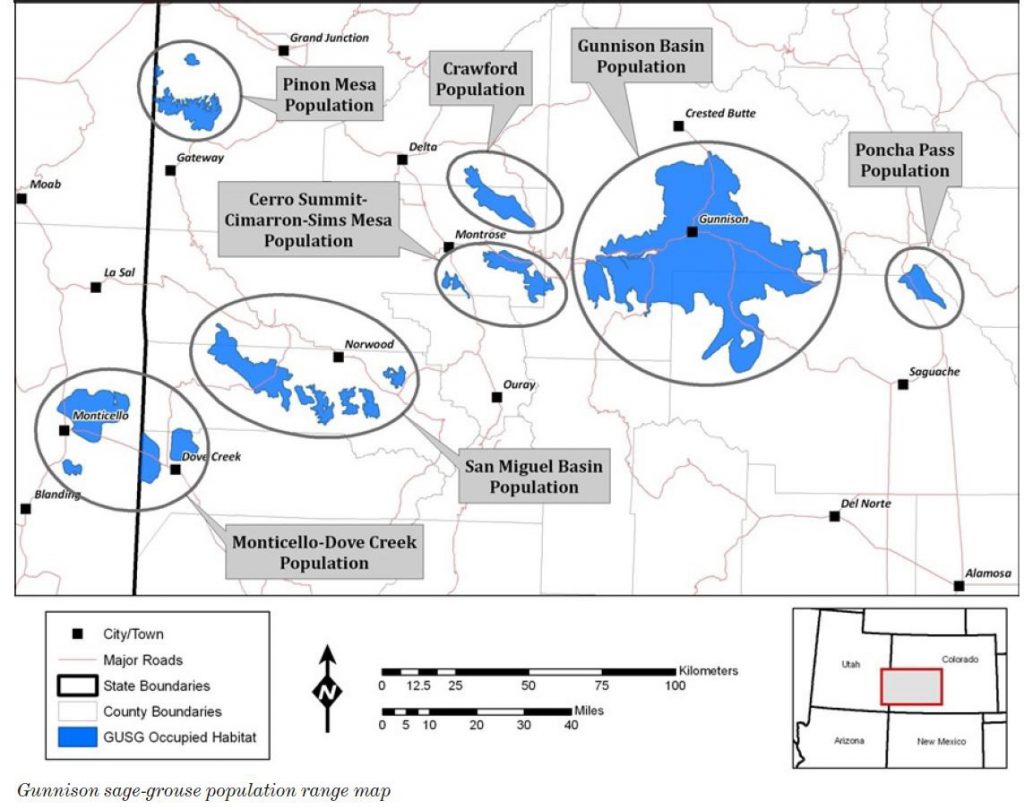Gunnison Sage-grouse Ecology & Conservation
Juvenile Gunnison Sage-grouse feeding, courtesy of Tony Apa and CPW.

Overview:
The Gunnison Sage-grouse are close relatives of the largest species of grouse in North America, the greater sage-grouse. These grouse rely heavily on intact habitat dominated by sagebrush. The sagebrush ecosystem’s plants provide food and cover for the birds year-round.
IUCN list: Endangered
Location/Range:
Gunnison Sage-grouse are found specifically in southwestern Colorado and southeastern Utah within seven isolated subpopulations with all but 1 steadily declining as time has gone on. These grouse are classified as threatened and protected under the Endangered Species Act with less than 3,000 birds total across all 7 populations.
Behavior:
The birds partake in intricate mating rituals on relatively open areas called leks that occur within the sagebrush ecosystem. Male sage-grouse begin arriving on leks typically in March and faithfully visit the lek daily until mid-May. The females gather around the males as they perform their dances to evaluate the most suitable mate. Eventually, perhaps after several mornings of assessing males, a female chooses a male and invites mating. After mating the female wanders off the lek and into the sagebrush where she finds a location to build a nest and lay her eggs.
Distinct from greater sage-grouse:
Although the birds appear very similar in photos to their relatives, the greater sage-grouse, they are classified as a different species. They are about two-thirds the size of the greater sage-grouse, and also differ in their behavior and morphological traits. The mating dance of the Gunnison Sage-grouse is different from the greater sage-grouse, and they have different banding patterns on their tail feathers as well as more prominent filoplumes (ponytail feathers). To see a Gunnison Sage-grouse lekking dance, watch the video on this page.
